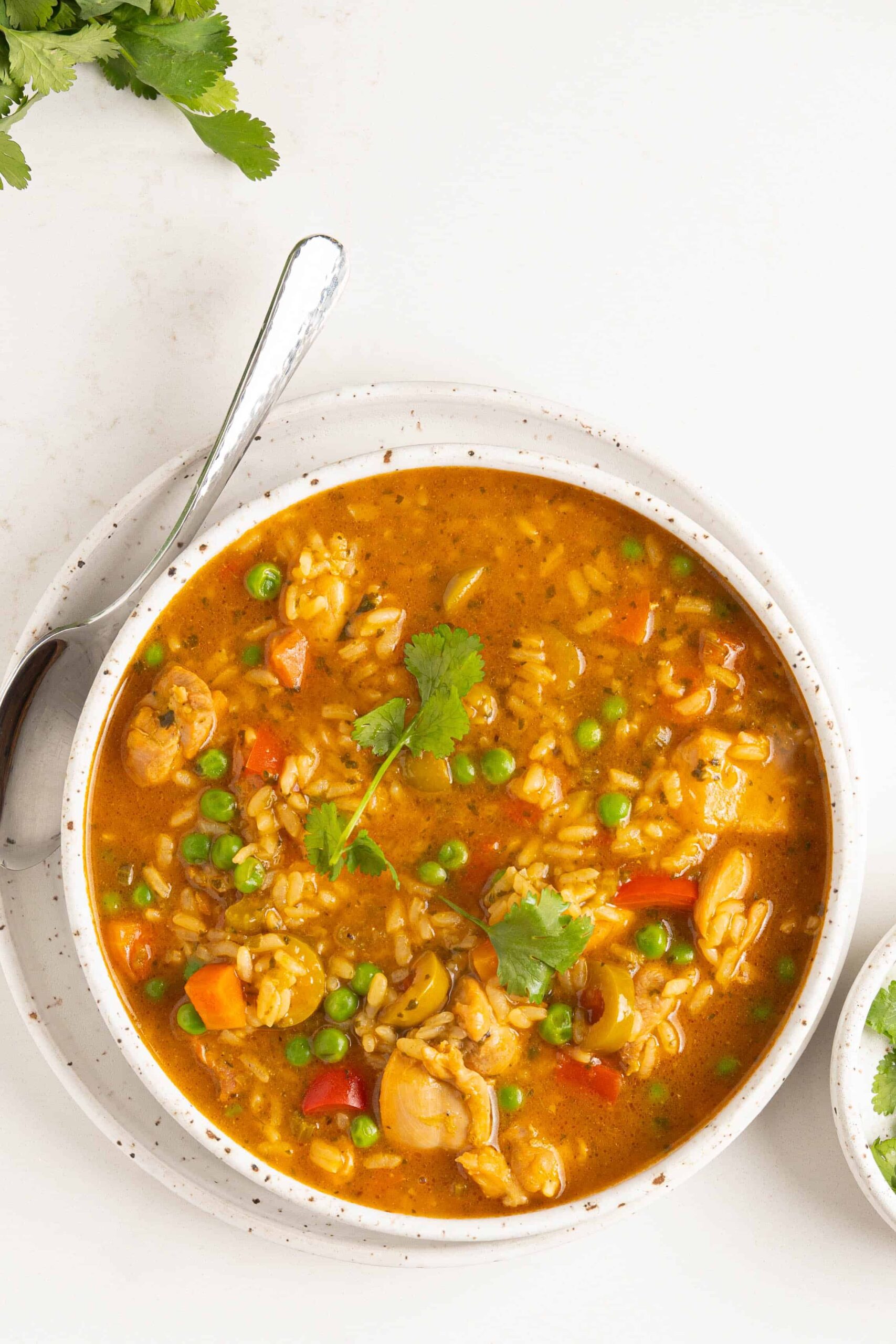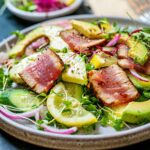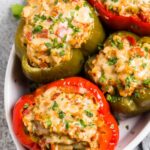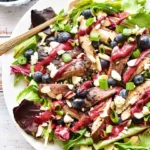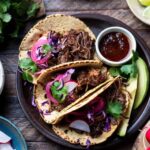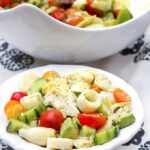Puerto Rican cuisine is a vibrant blend of flavors and cultures, reflecting the island’s rich history. Exploring these recipes lets you experience a delightful variety of ingredients and cooking techniques.
Discovering these traditional dishes will deepen your appreciation for Puerto Rican culture. They offer an easy way to enjoy comforting and flavorful meals that are perfect for any occasion.
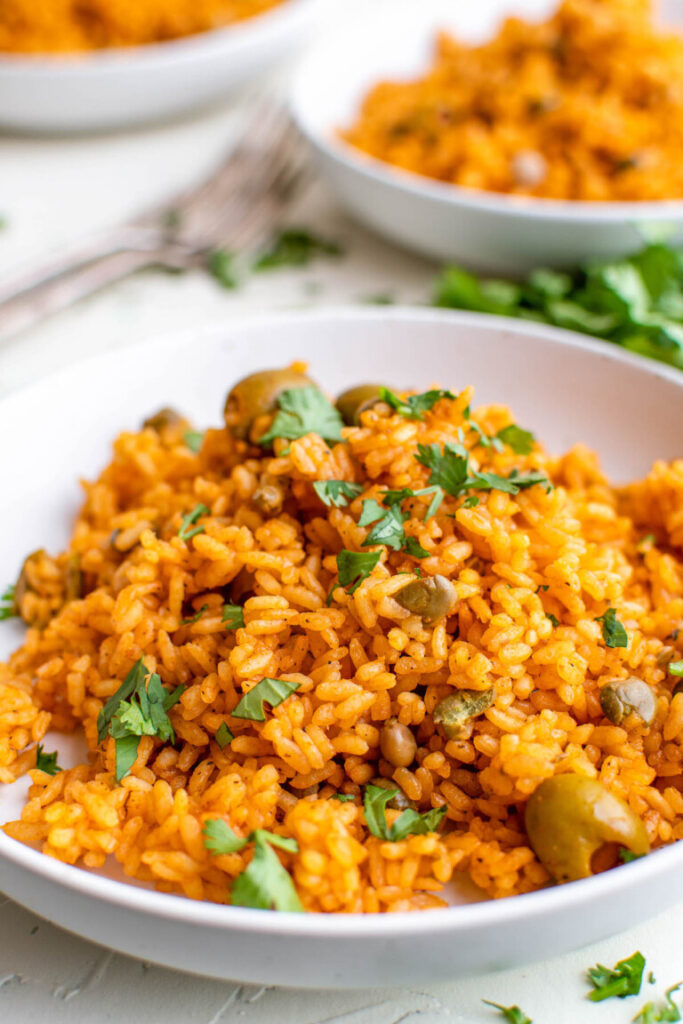
1) Arroz con Gandules
Arroz con Gandules is a classic Puerto Rican dish made with rice and pigeon peas. It’s a staple at family gatherings and holidays.
You start by heating olive oil in a large pot. Add chopped onions, green peppers, cilantro, and garlic. Sauté until the onions are translucent and the peppers soften.
Next, mix in tomato sauce, sazon, and a pinch of cumin. Stir until everything is well-blended and fragrant.
Add in the pigeon peas, along with some water or broth. You can also include Spanish olives if you like.
Once the mixture boils, pour in the rice. Stir to make sure the rice is fully submerged and evenly mixed.
Cover the pot and reduce the heat. Let it cook for about 25 minutes. Check occasionally to ensure the rice doesn’t stick to the bottom.
When the rice is tender, fluff it with a fork. Your Arroz con Gandules is now ready to serve. Enjoy it with friends and family.
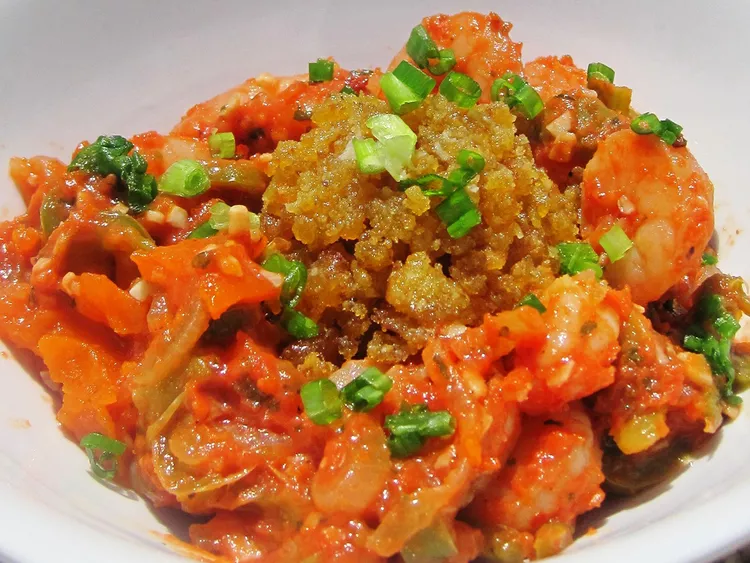
2) Mofongo
Mofongo is a classic Puerto Rican dish made from fried green plantains. The plantains are mashed together with garlic, pork rinds, and other seasonings. You can add ingredients such as bacon, chicken, or shrimp for extra flavor.
To make mofongo, start by peeling and slicing green plantains into rounds. Fry the plantains until they are golden brown and tender.
Once fried, transfer the plantains to a bowl. Mash them along with garlic, pork rinds, and salt using a pilón, which is a traditional mortar and pestle. This combo gives mofongo its unique taste and texture.
The mashed mixture is then shaped into small balls or packed into a bowl to form a dome. Serve it with a savory broth or as a side to various meats or seafood.
Mofongo is versatile and can be tailored to your taste, making it a favorite comfort food in Puerto Rican homes. Enjoy it warm with a touch of garlic sauce or mojo for added zest.
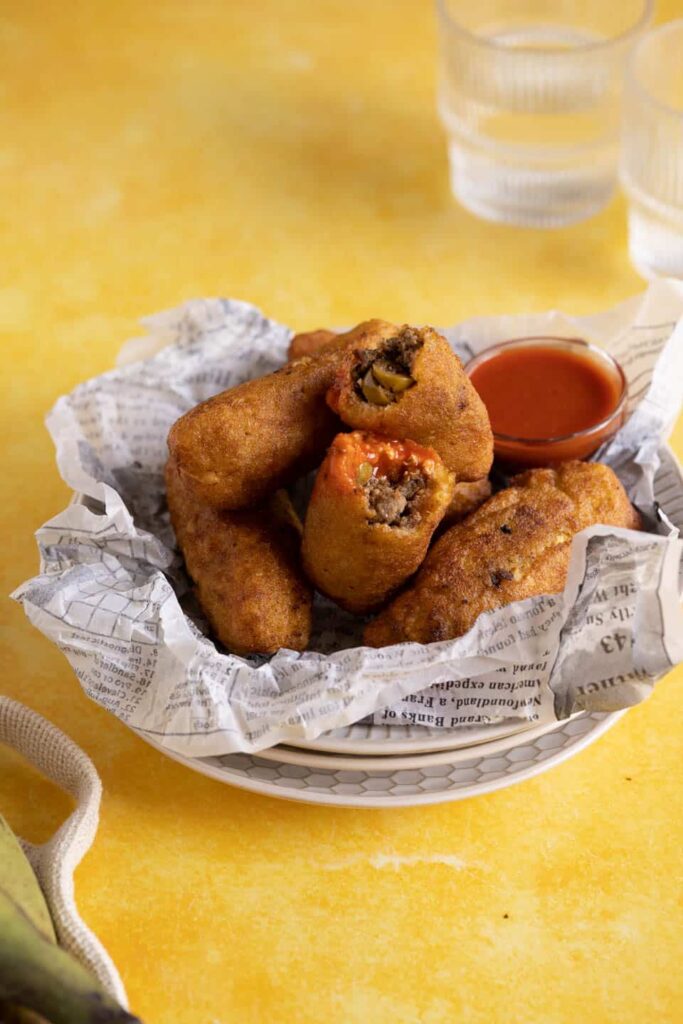
3) Alcapurrias
Alcapurrias are popular Puerto Rican fritters often found on the island’s streets. They are made from a dough called “masa” and usually filled with seasoned ground beef. This dish is a favorite at parties and family gatherings.
To make alcapurrias, start by preparing the masa. The dough is typically made from a mixture of grated yautia (a type of root vegetable) and green plantains. This combination gives the fritters their unique texture and flavor.
Next, prepare the picadillo filling. Sauté sofrito, onions, and green peppers in a skillet until fragrant. Add ground beef, seasonings, and olives to enhance the savory taste of the filling. Make sure everything is well combined and cooked through.
To assemble the alcapurrias, take a portion of the masa and flatten it in your hand. Place a spoonful of picadillo in the center. Carefully fold the masa over the filling, sealing the edges. This ensures the filling remains inside during frying.
Finally, heat oil in a large skillet or deep fryer to 350 degrees F. Fry the alcapurrias until golden brown and crispy on all sides. This usually takes about 5 to 6 minutes. Serve hot and enjoy the delicious flavors of Puerto Rico!
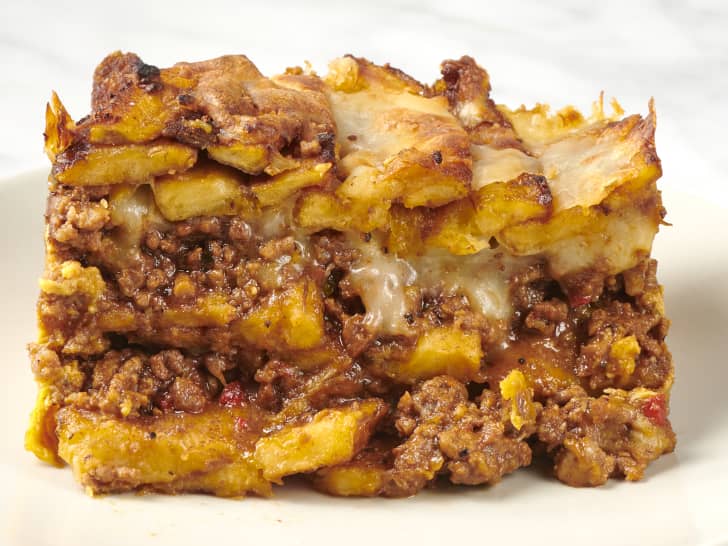
4) Pastelón
Pastelón, sometimes called Puerto Rican plantain lasagna, is a savory dish that combines sweet plantains with layers of ground beef and cheese. The plantains serve as the “noodles,” giving this dish a unique twist.
First, you need to peel and slice the plantains lengthwise. Fry them in neutral oil until they are golden brown on each side. This helps to soften them and bring out their sweetness.
Next, cook the ground beef with onions, garlic, and peppers until it is well browned. Some also add a bit of cilantro or recaito for extra flavor. Once the beef is cooked through, it’s time to assemble the pastelón.
In a baking dish, layer the fried plantains, ground beef mixture, and shredded cheese. Repeat these layers until you’ve used all the ingredients. Make sure to end with a layer of cheese on top.
Bake the pastelón in the oven at 350°F until the cheese is melted and bubbly. Usually, this takes about 5-7 minutes. After baking, let it cool slightly before serving to make slicing easier.
Pastelón is a delicious blend of sweet and savory flavors. It’s perfect for family dinners and gatherings.
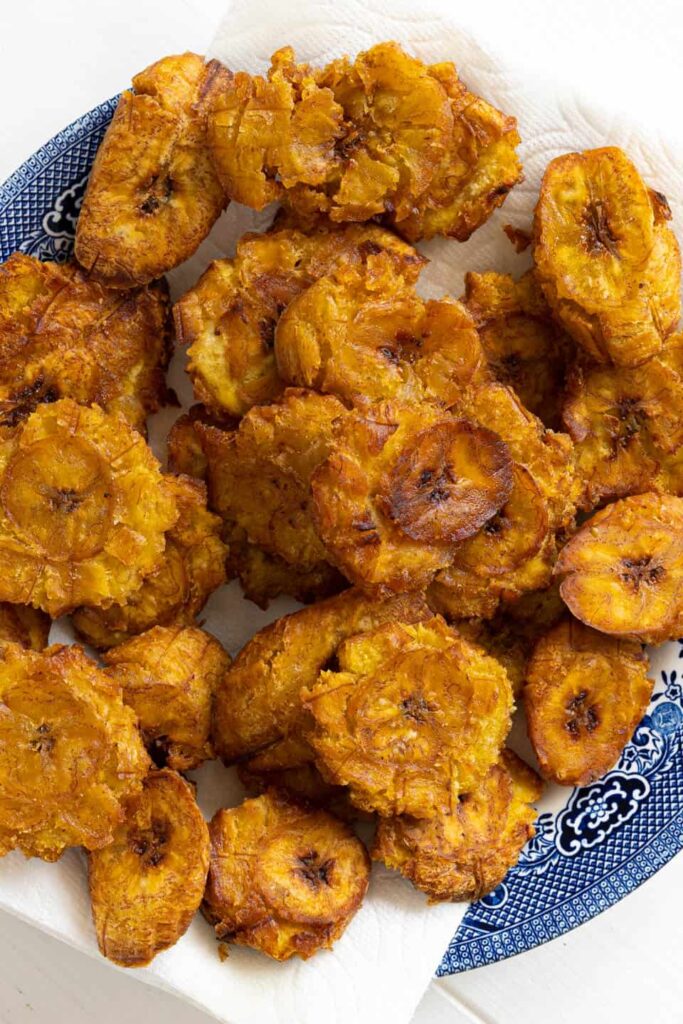
5) Tostones
Tostones are crispy fried plantains, a popular side dish in Puerto Rican cuisine.
To make tostones, start by peeling green plantains. Cut them into 1-inch thick slices.
Heat oil in a large deep skillet over medium-high heat. Add the plantain slices and fry them for about 3 minutes on each side until they are golden brown.
Remove the plantains from the pan and drain them on paper towels.
Using a tostonera or the bottom of a heavy cup, smash the plantains to flatten them. Be gentle to avoid breaking them.
Refry the smashed plantains for another 2 minutes on each side until they are crispy and golden.
After frying, drain the tostones on paper towels again. Season them with salt immediately.
For extra flavor, you can soak the first-fried plantains in a mixture of water, lime juice, and salt for a few minutes before the second fry.
Serve your tostones hot. They are often enjoyed with a garlic dipping sauce called “mojo” or simply with ketchup.
Tostones are a delicious and simple dish to make. They add a satisfying crunch to any meal.
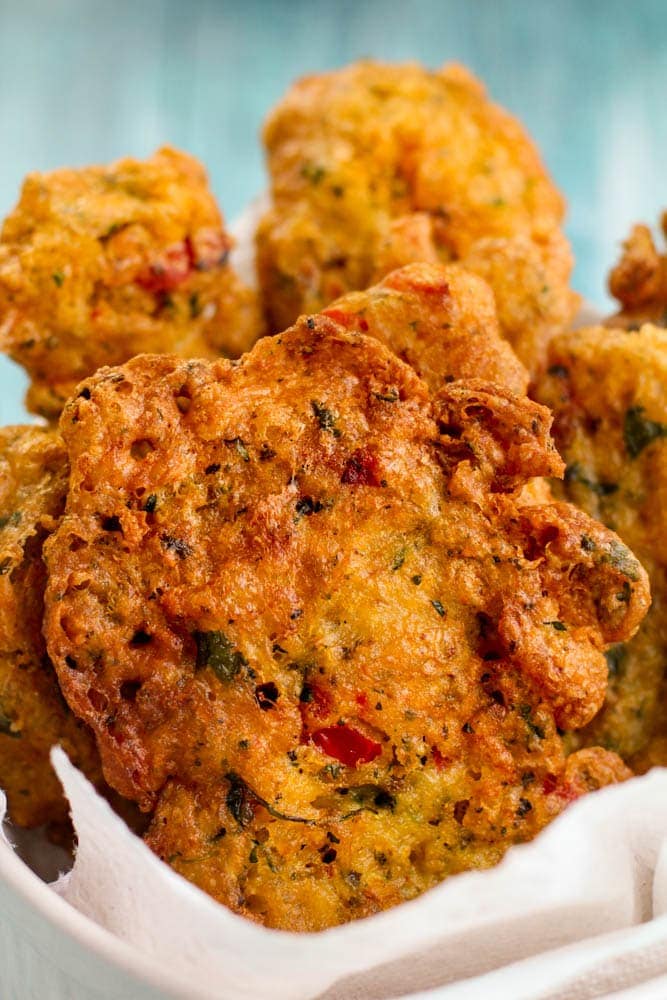
6) Bacalaitos
Bacalaitos are a popular Puerto Rican dish made from salted codfish fritters. They are crispy on the outside and soft and flavorful on the inside.
To prepare Bacalaitos, first, desalinate the codfish by soaking it in water overnight. Change the water a few times to remove excess salt. Cook the soaked codfish in fresh water for about 12 minutes until tender. Let it cool and then flake the fish, removing any bones.
Next, create the batter. In a large bowl, mix flour, baking powder, and water until you get a texture similar to pancake batter. Add sofrito, sazon, garlic, cilantro, bell pepper, onion, pepper, oregano, and the flaked codfish. The batter should be thin for a crispier fritter.
Heat oil in a frying pan over medium heat. Spoon the batter into the hot oil, making small circles. Fry until golden brown on both sides. Ensure the fritters are cooked through and crispy.
Drain the Bacalaitos on paper towels to remove excess oil. Serve them hot as an appetizer or snack. Enjoy them with a squeeze of lime or dipping sauce if you like extra flavor.
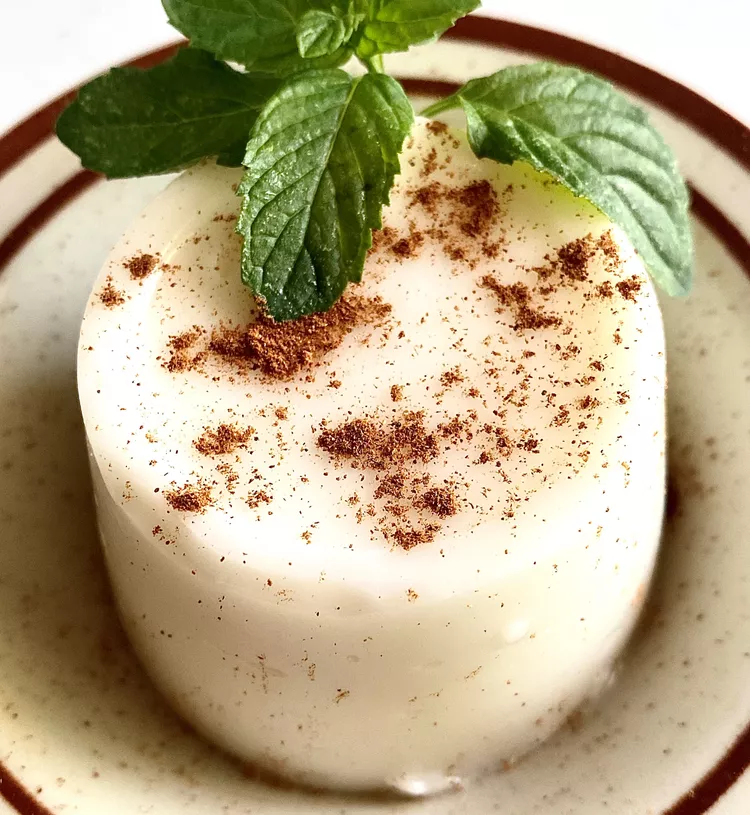
7) Tembleque
Tembleque is a traditional Puerto Rican coconut pudding. It’s a simple yet delicious dessert known for its creamy texture.
To make Tembleque, you need a few basic ingredients: coconut milk, sugar, cornstarch, and a bit of salt. Some recipes also call for vanilla or other flavor extracts.
Start by mixing the sugar, cornstarch, and salt in a pot while it’s still cold. Gradually add in the coconut milk, making sure to whisk it constantly. This helps avoid lumps.
Heat the mixture over medium heat, stirring constantly. It will begin to thicken after a few minutes. Once it reaches the desired consistency, remove it from heat.
Pour the pudding into molds or a large dish. Cover with plastic wrap to prevent a skin from forming. Refrigerate until it’s fully set, usually for a few hours or overnight.
When ready to serve, you can garnish Tembleque with ground cinnamon or toasted coconut. It’s a refreshing and light dessert, perfect for any occasion.
Enjoy your homemade Tembleque, a taste of Puerto Rican culinary tradition!
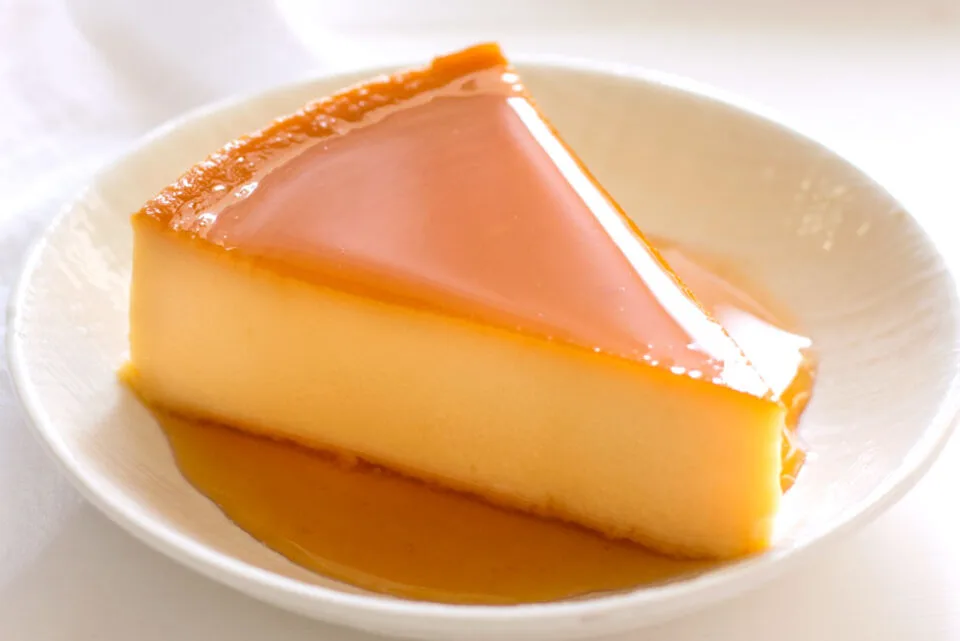
8) Flan de Queso
Flan de Queso, or Cheese Flan, is a popular Puerto Rican dessert. It’s creamy and rich, with a caramel topping that perfectly balances the flavors.
To make Flan de Queso, first preheat your oven to 350°F. Melt sugar in a small saucepan over medium-low heat until it turns into caramel. Carefully pour the caramel into a round baking dish.
In a blender, mix sweetened condensed milk, evaporated milk, cream cheese, eggs, vanilla, and a pinch of salt until smooth. Pour the mixture over the caramel in the baking dish.
Place the dish inside a larger pan. Add hot water to the larger pan until it reaches about an inch up the sides of the baking dish. This water bath helps the flan cook evenly.
Bake for 60-80 minutes or until the center is set but still jiggly. Once done, cool the flan in the water bath for two hours. Remove and refrigerate before serving.
When ready to serve, loosen the edges with a knife and flip the flan onto a plate. Enjoy this rich and delicious dessert that truly captures the essence of Puerto Rican cuisine.
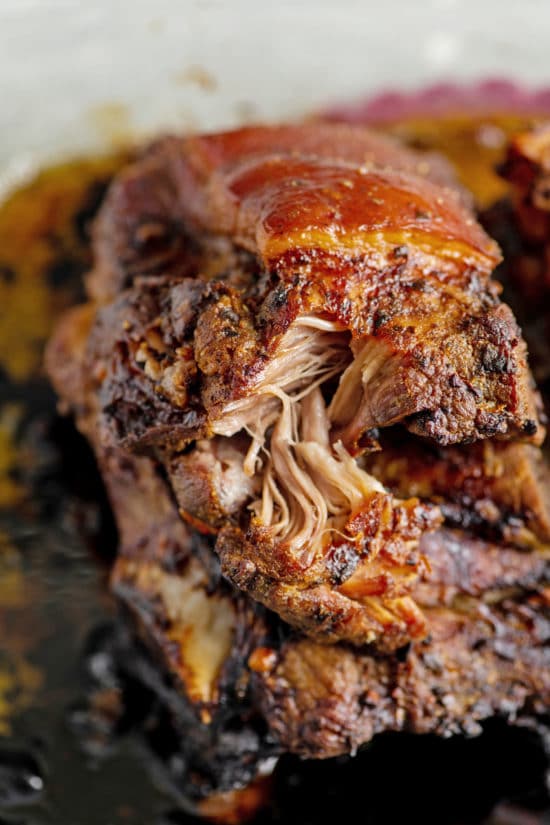
9) Pernil
Pernil is a classic Puerto Rican dish known for its rich flavors and tender meat. This slow-roasted pork shoulder is often the centerpiece of special occasions and holidays.
To begin, you marinate the pork overnight. Use a blend of garlic, oregano, black pepper, salt, adobo, and other spices. Some recipes also include citrus juices like orange or lime for added flavor.
Before roasting, make slits in the pork to help the marinade penetrate deeper. Preheat your oven to around 300°F. Place the pork in a roasting pan, covered with foil.
Roast the pork for several hours, depending on its weight. A typical cooking time is 3-6 hours. You want the meat to be fall-apart tender.
Remove the foil for the last hour of cooking. This allows the skin to become crispy. The contrast between the crispy skin and tender meat is a hallmark of good Pernil.
Let the Pernil rest before slicing. This helps keep the juices inside the meat. Serve with traditional sides like rice, beans, or plantains. Your guests will love the flavors that come from this slow-cooked masterpiece.
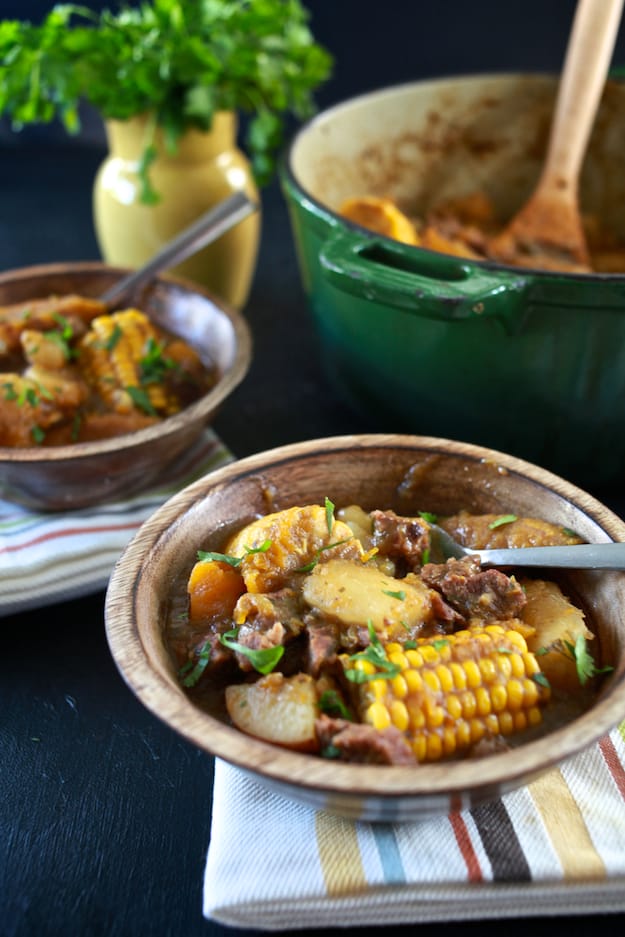
10) Sancocho
Sancocho is a beloved Puerto Rican stew that combines hearty meats and a mix of root vegetables. It’s perfect for a cozy meal.
To start, marinate your beef with seasonings like garlic, oregano, and salt. Let it sit while you prep other ingredients.
In a large pot, heat oil and sear the beef until browned. Add onions and cook until tender.
Pour in enough water or beef broth to almost fill the pot. Add sofrito, sazón, adobo, and a couple of bay leaves. Bring to a boil.
Next, add vegetables like potatoes, yuca, plantain, calabaza, and corn. Simmer on low until the vegetables are tender, about 30 minutes.
You can use an Instant Pot for quicker cooking. Set it on high pressure for 30 minutes, then release pressure naturally or after 10 minutes.
Once done, stir and taste for seasoning. Adjust salt and pepper if needed. Serve hot and enjoy a taste of Puerto Rican tradition!
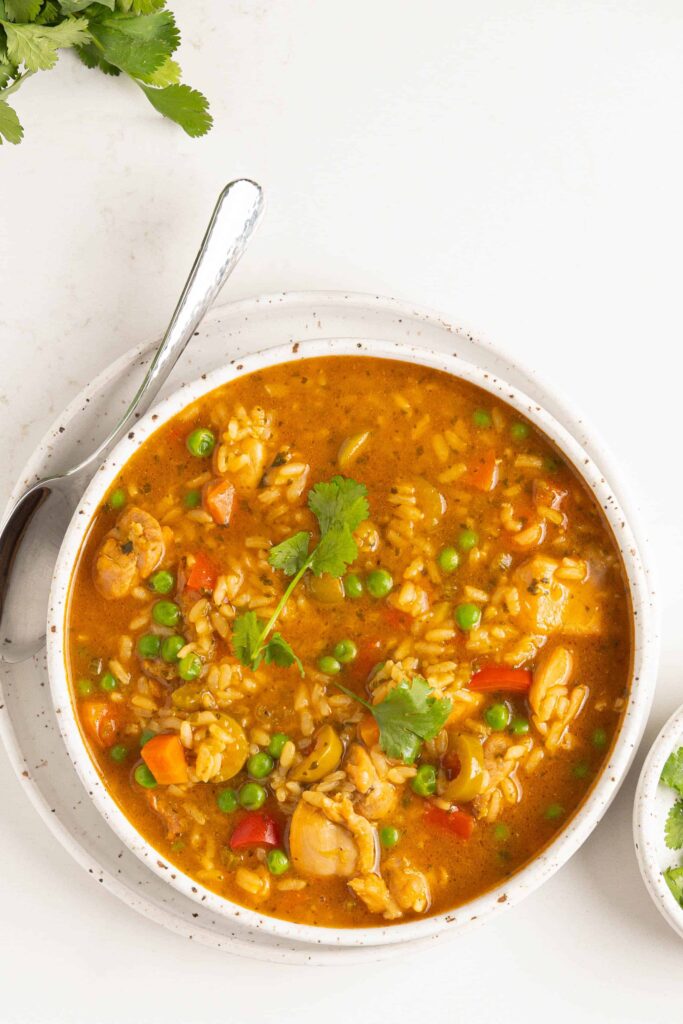
11) Asopao de Pollo
Asopao de Pollo is a comforting Puerto Rican chicken and rice stew. To start, you’ll need to heat some oil in a large pot over medium heat. Add chicken pieces seasoned with salt, pepper, adobo, and sazón. Brown the chicken on all sides for about 4-5 minutes per side.
Once browned, remove the chicken and set it aside. In the same pot, add sofrito, bell pepper, carrot, and celery. Cook these vegetables until they become soft and fragrant. This usually takes about 3-4 minutes.
After the vegetables are cooked, return the chicken to the pot. Add tomato sauce, diced tomatoes, chicken broth, and bay leaves. Stir everything together well.
Bring the mixture to a boil, then reduce the heat to medium-low and cover. Let it cook for about 25 minutes.
Next, add rice to the pot. Stir well and cover again. Cook the rice for 25-30 minutes, or until it’s tender.
Add corn and cook for another 5 minutes. Finally, mix in peas and cook for 1-2 minutes.
Serve your Asopao de Pollo hot, with a sprinkle of fresh cilantro on top if you like. Enjoy!
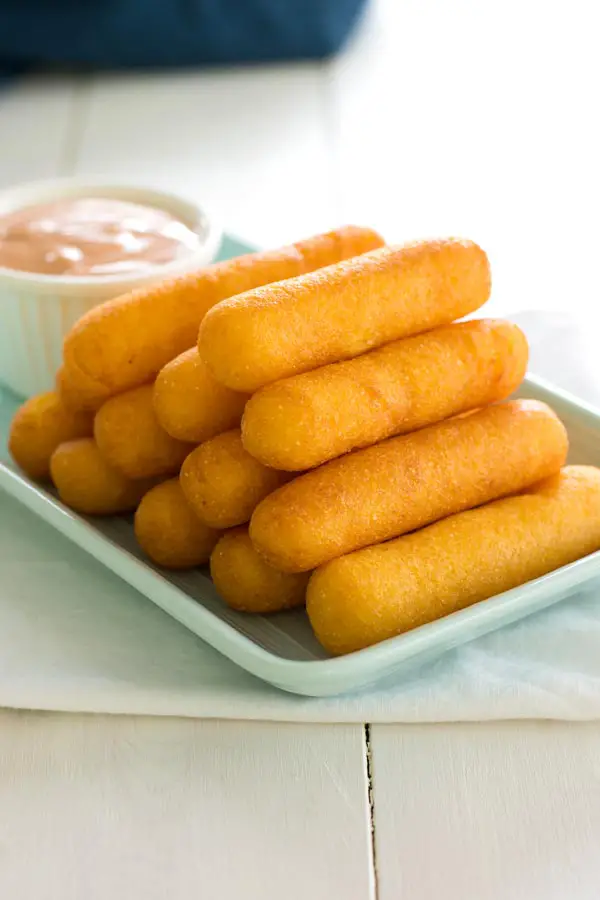
12) Sorullitos de Maíz
Sorullitos de Maíz are delicious Puerto Rican cornmeal fritters. You start by heating water, butter, sugar, and salt in a saucepan over medium heat. Bring this mixture to a boil.
Then, gradually add cornmeal while continuously stirring. Keep stirring until the mixture forms a soft ball. Remove from heat and mix in grated cheese. Let it cool until it’s safe to handle.
Once cooled, take small portions of dough and flatten them into oval shapes. Add a bit of cheese in the center and fold the dough over to cover it. Shape them into cylinders.
Heat vegetable oil in a frying pan. Carefully place the shaped sorullitos into the oil and fry until they are golden brown. Drain on paper towels before serving. Enjoy them warm!
Understanding Puerto Rican Cuisine
Puerto Rican cuisine is a rich blend of different cultures and flavors. From historical influences to the common ingredients used, it offers a unique and vibrant culinary experience.
Historical Influences
The cuisine of Puerto Rico is shaped by a mix of indigenous Taíno, Spanish, and African influences. When the Spanish arrived, they brought ingredients like pork, rice, and wheat.
African slaves introduced new cooking techniques and ingredients such as plantains and root vegetables. Over time, these diverse influences combined to create the distinctive flavors found in Puerto Rican dishes today.
Common Ingredients
In Puerto Rican cooking, certain ingredients are almost always present. Sofrito is a base made of garlic, onions, peppers, and tomatoes, used in many dishes for its rich flavor.
You will also find adobo and sazón seasoning blends, which are essential for marinating and seasoning meats. Plantains, both green and ripe, are used in dishes like tostones and maduros.
Rice and beans are common sides, typically prepared with spices and herbs. Finally, coconut, yuca, and cornmeal are other staples that add depth and variety to many traditional recipes.
Understanding these ingredients and historical influences will give you a deeper appreciation for Puerto Rican cuisine.
Cooking Techniques and Tips
To master Puerto Rican cuisine, understanding the traditional cooking methods and adding modern twists can elevate your dishes. This section provides insight into key techniques that balance authenticity and creativity.
Traditional Cooking Methods
Puerto Rican cuisine relies on sofrito, a blend of bell peppers, onions, garlic, and other herbs. Sofrito forms the base of many dishes, adding depth and flavor. Make sure to sauté sofrito until it’s fragrant before adding other ingredients.
Adobo and sazon seasonings are crucial. They typically contain garlic, oregano, and cumin. Use these to season meats, beans, and stews.
Slow cooking methods like stewing and braising are common. Dishes like Pollo Guisado require a slow simmer to blend the flavors. Utilizing a low flame ensures tender meat and rich sauces.
Cooking meat and seafood on a grill or open flame is traditional for dishes like Asopao, a hearty soup. This method imparts a smoky flavor that is signature to Puerto Rican cooking.
Modern Twists
To modernize traditional recipes, consider substituting ingredients without losing authenticity. For instance, use coconut milk in recipes like Arroz con Dulce to add a creamy texture while keeping the flavor intact.
Incorporate fresh, local vegetables into classic dishes. Adding roasted vegetables can enhance both the nutritional value and flavor profile of your meals.
Use modern kitchen tools like a food processor for a smoother sofrito, or an Instant Pot to speed up the cooking process without compromising flavor. These adaptations can make complex recipes more accessible.
Experiment with plating and presentation. Simple garnishes like fresh herbs or a drizzle of extra-virgin olive oil can make traditional dishes visually appealing. This refined presentation is ideal for entertaining or trying something new while honoring the roots of the cuisine.
